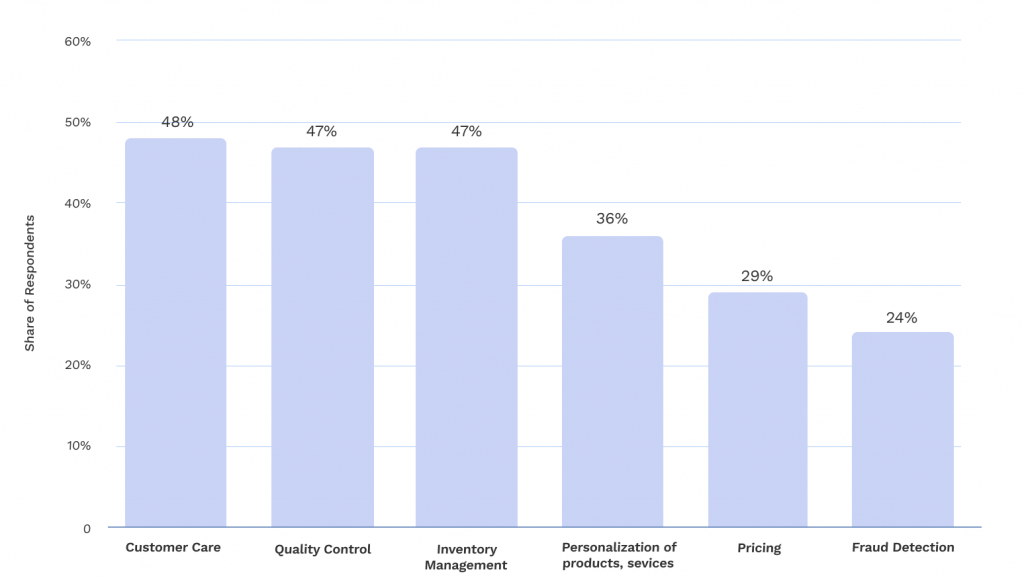Analyzing Consumer Buying Patterns: The All-New Guide
Analyzing Consumer Buying Patterns: The All-New Guide
In today’s diverse marketplace, no two buyers are the same. Each comes with their unique set of desires, preferences, and purchasing habits.
As a business, it’s not just about offering a product or service; it’s about recognizing, analyzing, and adapting to the intricacy of consumer buying patterns that underlie the market dynamics. By understanding consumer buying patterns, businesses can tailor their offerings to better meet customer needs, potentially expanding their audience and boosting their bottom line.
In this blog post, we explore the importance of understanding consumer buying patterns, the role of data in analyzing these patterns, how AI can revolutionize this analysis, and how businesses can leverage these insights for profit optimization.
Quick Takeaways
- Understanding consumer buying patterns allows businesses to make informed decisions about product development, pricing strategies, and marketing campaigns.
- AI can quickly process large amounts of data, identify patterns and trends, make predictions about future consumer behavior, and has real-world applications.
- With consumer buying data, businesses can optimize their pricing strategies, manage inventory more effectively, and tailor their marketing and sales strategies to consumer preferences.
- AI software can enhance optimization processes by providing real-time analysis and predictive analytics, giving businesses a competitive edge.
- Almost 50% of businesses are already using AI for inventory management.
Understanding Consumer Buying Patterns
Consumer buying patterns are essentially the habits or behaviors exhibited by customers throughout the buying process.

These patterns offer valuable insights into how, when, and why consumers choose to buy certain products or services. There are several key factors that typically influence these patterns:
- Price. The cost of a product or service is often the first thing a consumer considers. If the price is perceived as too high, they may opt for a more affordable alternative. If the price is seen as a bargain, it can motivate the consumer to make a purchase.
- Perceived Quality. Consumers are generally willing to pay more for items they believe are high-quality and durable. If a product is seen as substandard or unreliable, it can deter potential buyers.
- Convenience. If a product is readily available and easy to buy, it’s more likely to be chosen. However, if the purchase process is complicated or time-consuming, consumers may look elsewhere.
- Brand Reputation. If consumers have positive associations with the brand, they’re more likely to buy. Negative experiences or perceptions, however, can lead them to choose a competitor’s product.
By understanding these buying patterns, businesses can make more informed decisions about product development, pricing strategies, and marketing campaigns.
The Role of Data in Analyzing Buying Patterns
The Importance of Data Collection
Collecting data about consumer behavior is like gathering pieces of a puzzle. Each piece of information, whether it’s about a customer’s buying history or their feedback on a product, helps to complete the picture. The more data we have, the clearer our understanding of consumer buying patterns becomes.
By understanding their consumers through data, businesses can:
- Establish better marketing and communications
- Improve customer retention
- Increase loyalty
- Better plan inventory
- Increase sales
- Research competition

Types of Data and Collection Methods
There are various types of data that businesses can collect to understand buying patterns, including:
- Transactional data
- Behavioral data
- Surveys
- Social media analytics
Collecting this data can be done in several ways. For example, businesses can use customer relationship management (CRM) systems to track transactional data. They can also use web analytics tools to monitor online behavior, and social media listening tools to gather data from social platforms.
How AI Can Help Analyze Consumer Buying Patterns
Artificial Intelligence (AI) has revolutionized the way businesses analyze consumer buying patterns. With access to AI insights, businesses can gain a deeper understanding of consumer buying patterns, make more informed decisions, and ultimately optimize profits.
Here are four key AI-abilities that analyze consumer buying patterns and contribute to business growth:
- Processing Large Amounts of Data. One of the biggest challenges businesses face is dealing with the sheer volume of data available. AI excels at processing large amounts of data quickly and accurately. It can sift through mountains of information, from purchase histories to social media posts, and identify patterns that might be missed by human analysts.
- Predictive Analytics. AI can also use the patterns it identifies to make predictions about future consumer behavior. This can help businesses anticipate changes in the market, adjust their strategies accordingly, and stay one step ahead of the competition.
- Real-World Applications. Many businesses are already using AI to analyze consumer buying patterns. For instance, online retailers use AI to recommend products based on a customer’s browsing history, and streaming services use it to suggest movies or songs based on a user’s past choices.
- Identifying Patterns and Trends. AI doesn’t just process data; it learns from it. Using machine learning algorithms, AI can identify patterns and trends in consumer behavior, allowing businesses to adjust inventory and price points accordingly. In fact, 47% of businesses are already using AI for inventory management.

Leveraging Consumer Buying Patterns for Profit Optimization
Optimizing Pricing Strategies
By understanding when and why consumers are willing to buy, businesses can adjust their pricing strategies to maximize profits.
For example, if data shows that consumers are more likely to buy a product during a particular season, a business might consider adjusting its prices during that time to increase sales and profits.
Inventory Management
Consumer buying patterns can also inform inventory management. If a business knows which products are likely to sell at different times of the year, it can manage inventory more effectively, reducing storage costs and minimizing the risk of unsold stock.
Marketing and Sales Strategies
Insights into consumer buying patterns can help businesses tailor their marketing and sales strategies to consumer preferences. By understanding what consumers want, businesses can create targeted marketing campaigns that speak directly to those desires, leading to increased sales.
The Role of AI Software
AI software can automate and enhance these optimization processes. Since AI can analyze consumer buying patterns in real-time, businesses can respond quickly to changes in the market. It can also use predictive analytics to forecast future trends, giving businesses a competitive edge.
Analyze Your Consumers’ Buying Patterns Today with Hypersonix
Consumer buying patterns provide a roadmap to the consumer’s mind, guiding businesses on how to meet their needs. By leveraging AI and its insights, you can optimize pricing strategies, effectively manage inventory, tailor sales and marketing strategies, and ultimately gain a competitive edge.
Hypersonix is a profit optimization platform that uses AI-powered tools to help DTC and eCommerce companies excel. Hypersonix’s ProfitGPT inventory management(Inventory AI) tools can help businesses leverage generative AI and inventory intelligence to provide actionable insights about inventory levels and pricing strategies.
To see how Hypersonix’s AI tools can help analyze your consumer buying patterns, request a demo today!






